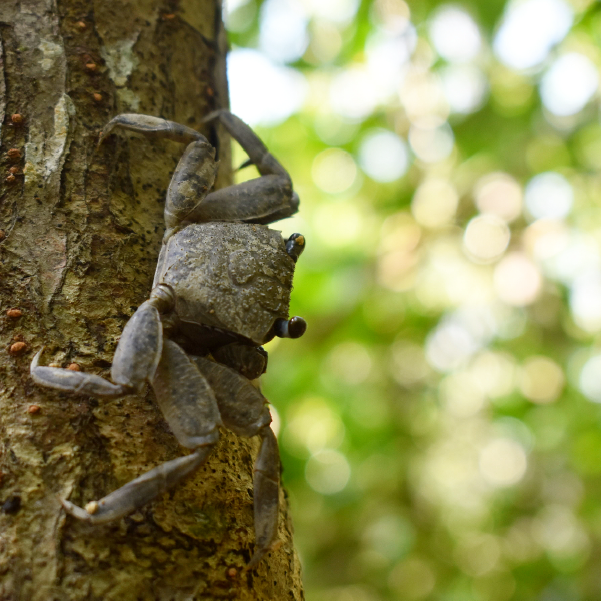Physical Features and Habitat
Mud crabs, also known as Scylla serrata, are large, heavy-bodied crustaceans found abundantly in the brackish water zones of the Sundarbans. They are characterized by their dark green to blackish shell (carapace), large pincers, and a body width that can reach up to 25 cm. Their powerful claws make them excellent burrowers and efficient predators. Mud crabs live in muddy creeks, mangrove roots, and estuarine riverbanks, thriving in the soft sediment environment that gives them their name.

Feeding Behavior
Mud crabs are omnivorous and opportunistic feeders. They prey on small fish, mollusks, worms, and detritus found in the mangrove mud. Their strong pincers help them crush shells and tear apart their food. They are also known to scavenge on dead organisms, contributing to the nutrient cycle of the ecosystem. During high tide, mud crabs become more active and forage for food across a wider area, while they retreat into burrows or hide under mangrove roots during low tide or danger.
Ecological and Economic Importance
Mud crabs play a crucial ecological role in maintaining the health of mangrove ecosystems by controlling the population of smaller organisms and cleaning up organic debris. Economically, they are highly valuable as a delicacy in both local and international seafood markets, especially in Southeast Asia. Crab fattening and farming in coastal Bangladesh, including the Sundarbans area, have become major sources of livelihood for local communities, particularly for women engaged in small-scale aquaculture.
Conservation and Threats
Despite their abundance, mud crabs face threats from overharvesting, habitat degradation, and unsustainable fishing practices. Juvenile crabs are often caught before reaching maturity, which can reduce the breeding population. Climate change, salinity changes, and pollution also pose risks to their habitat. Sustainable harvesting practices, seasonal bans, and community-based conservation initiatives are essential to protect this valuable species and the livelihoods it supports in the Sundarbans region.